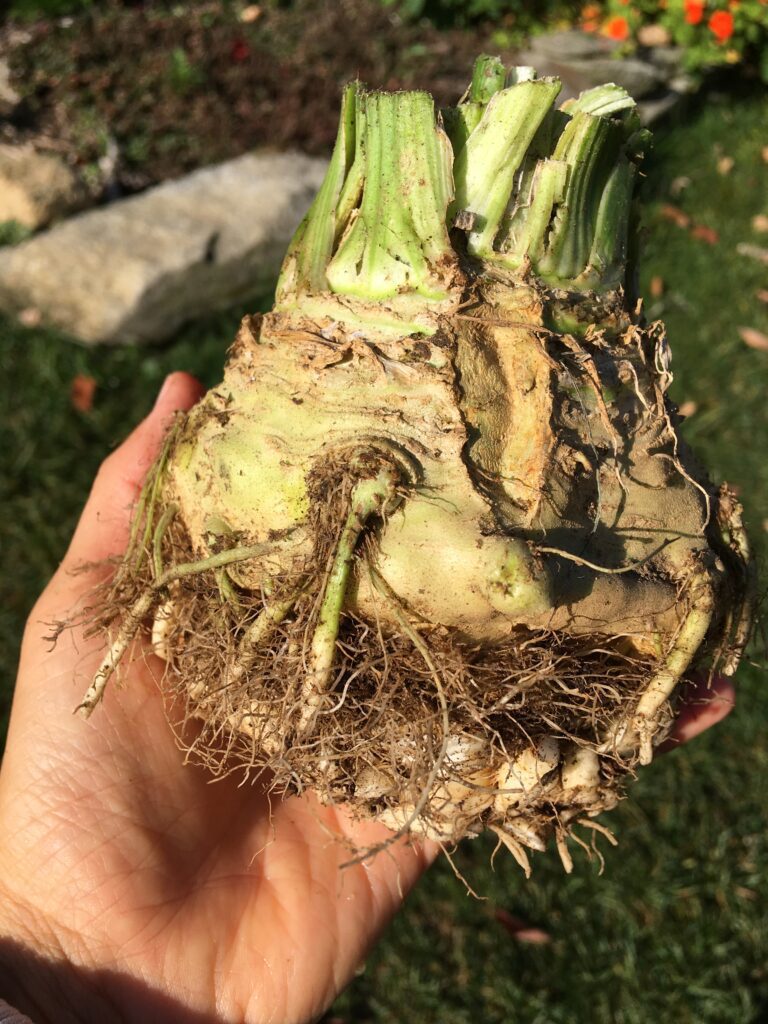
A relative of the carrot family, celeriac, also called celery root, is an unpromising-looking brute of a vegetable. It has a bumpy surface, a brackish-colored skin and tough, largely inedible stalks sprouting from its top, balanced by a hairy tangle of roots at its base. But with its subtle, celery-like flavor, celeriac is thoroughly delicious and suited to a range of cooking purposes.
Selection and Storage:
Celeriac keeps well, in fact if will keep in the field long after the stalks are killed off by the first frosts. Select bulbs that are heavy for their size and not overly large (as these often have cottony insides). Bulbs that are freshly harvested will have a green tinge around their tops. Celeriac bulbs, trimmed of stalks, will keep in a bag in the coolest part of the fridge for several weeks.
Culinary Uses:
To prepare celeriac, you need to remove all of the thick skin with a sharp knife. This can feel like quite a wasteful exercise, as rather a lot of trimming is necessary to get rid of all of the root matter. Put cut pieces of celeriac into a bowl of water with lemon juice as you go, as the flesh quickly oxidizes on contact with air.
Celeriac can be grated or cut into matchsticks for putting in salads. As its flavor tends to dominate, celeriac can be tempered by a quick blanching in boiling water before eating raw. Celeriac boiled and mashed makes delicious pureed, creamy soups. Celeriac is also delicious roasted much like potatoes.
Information from: The Produce Guide by Leanne Kitchen.

